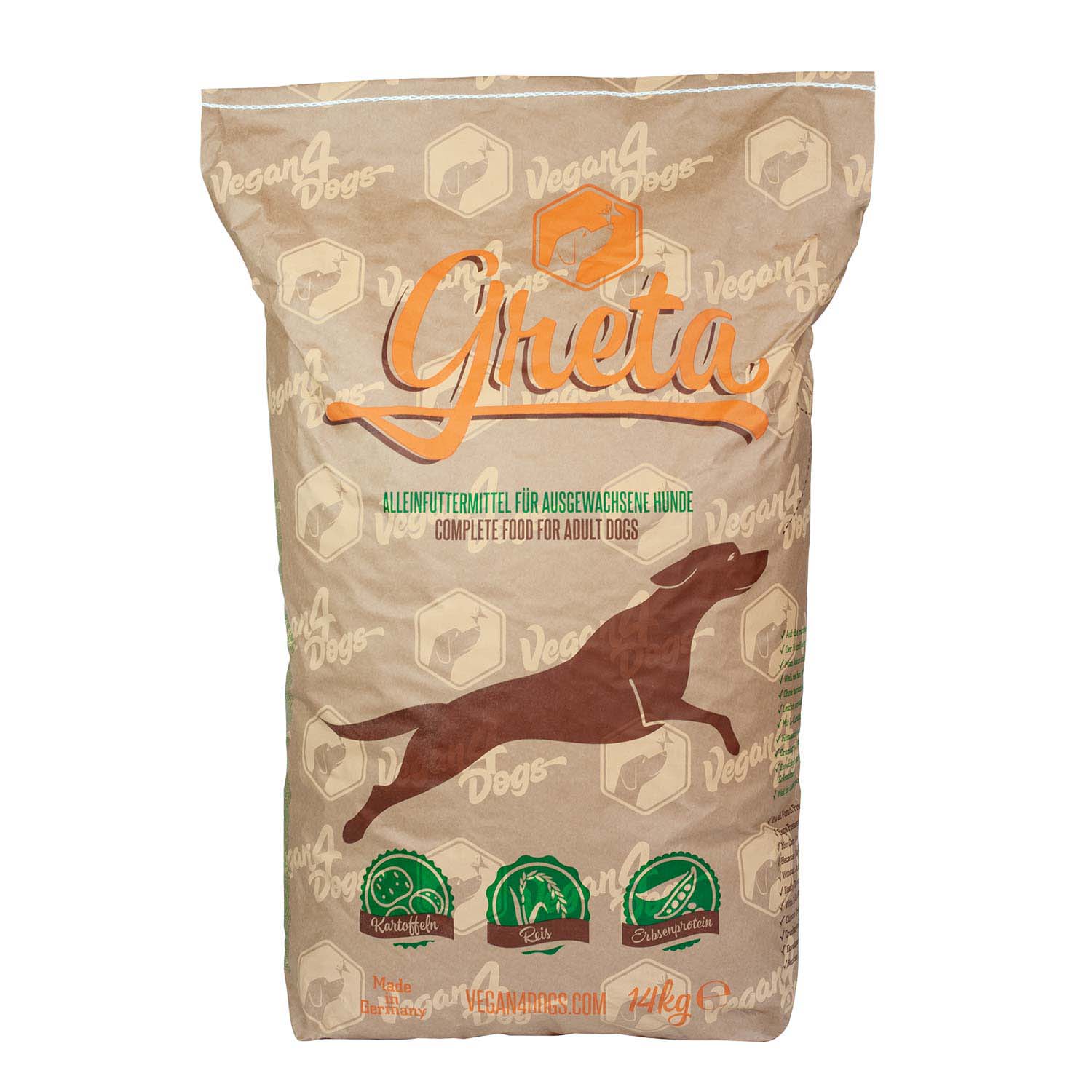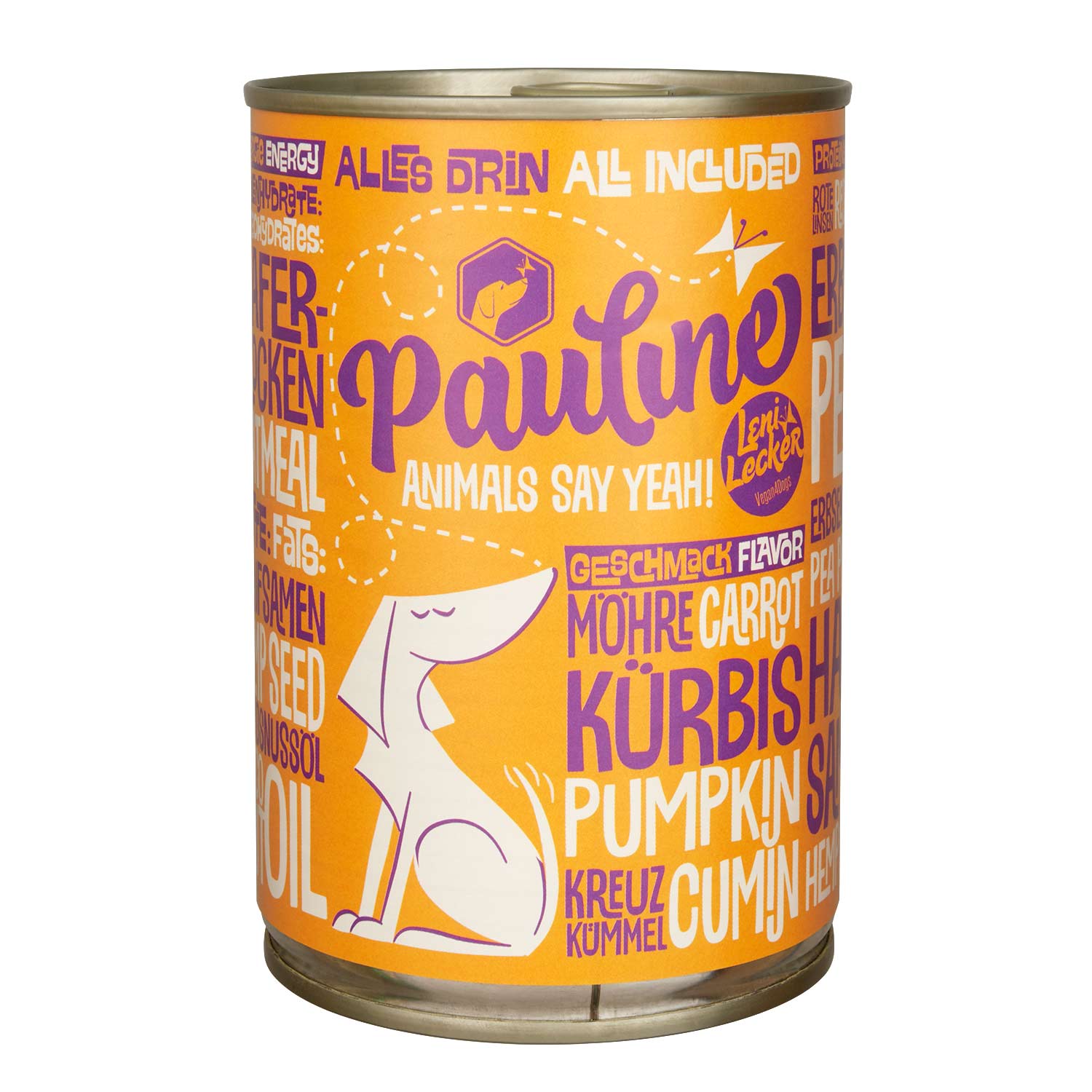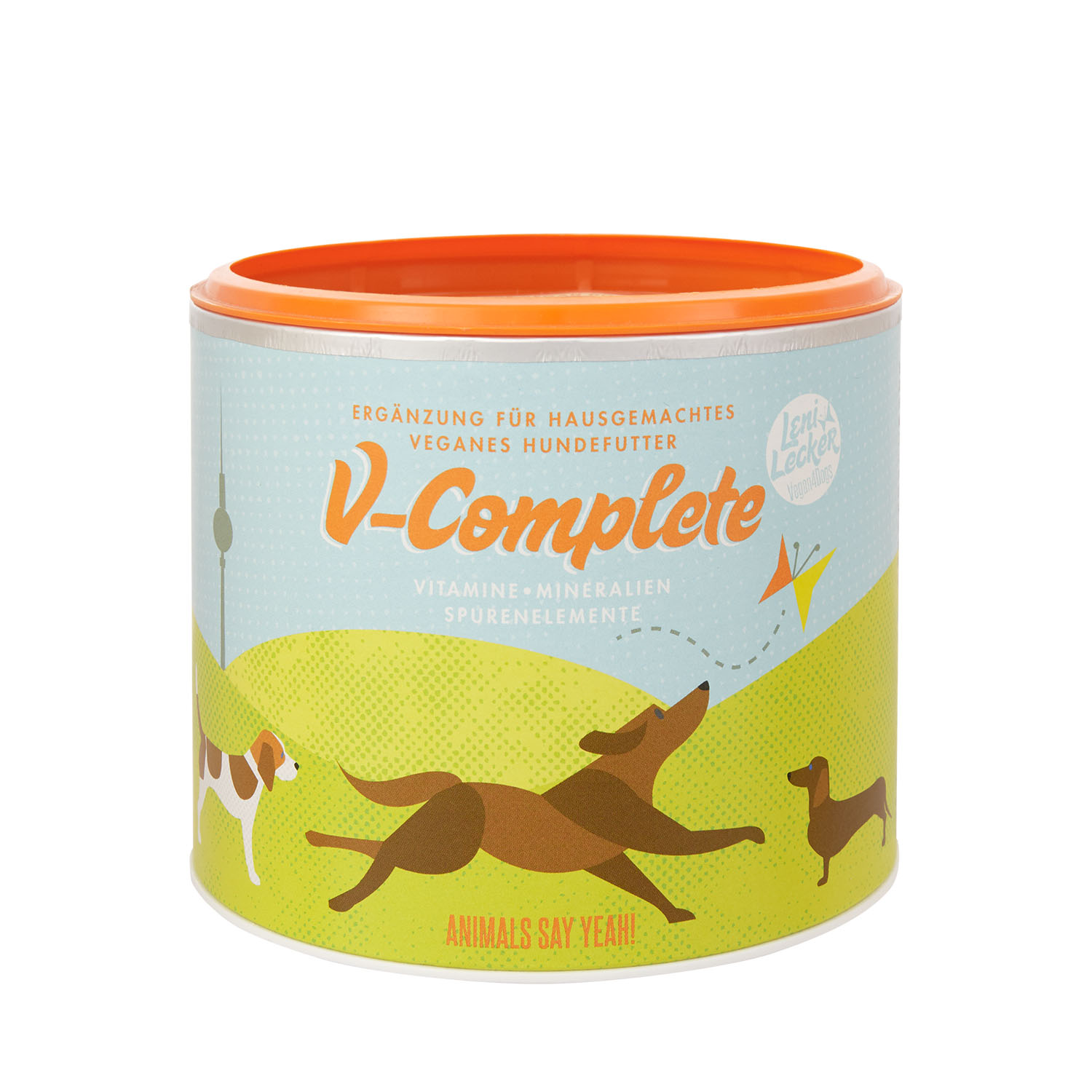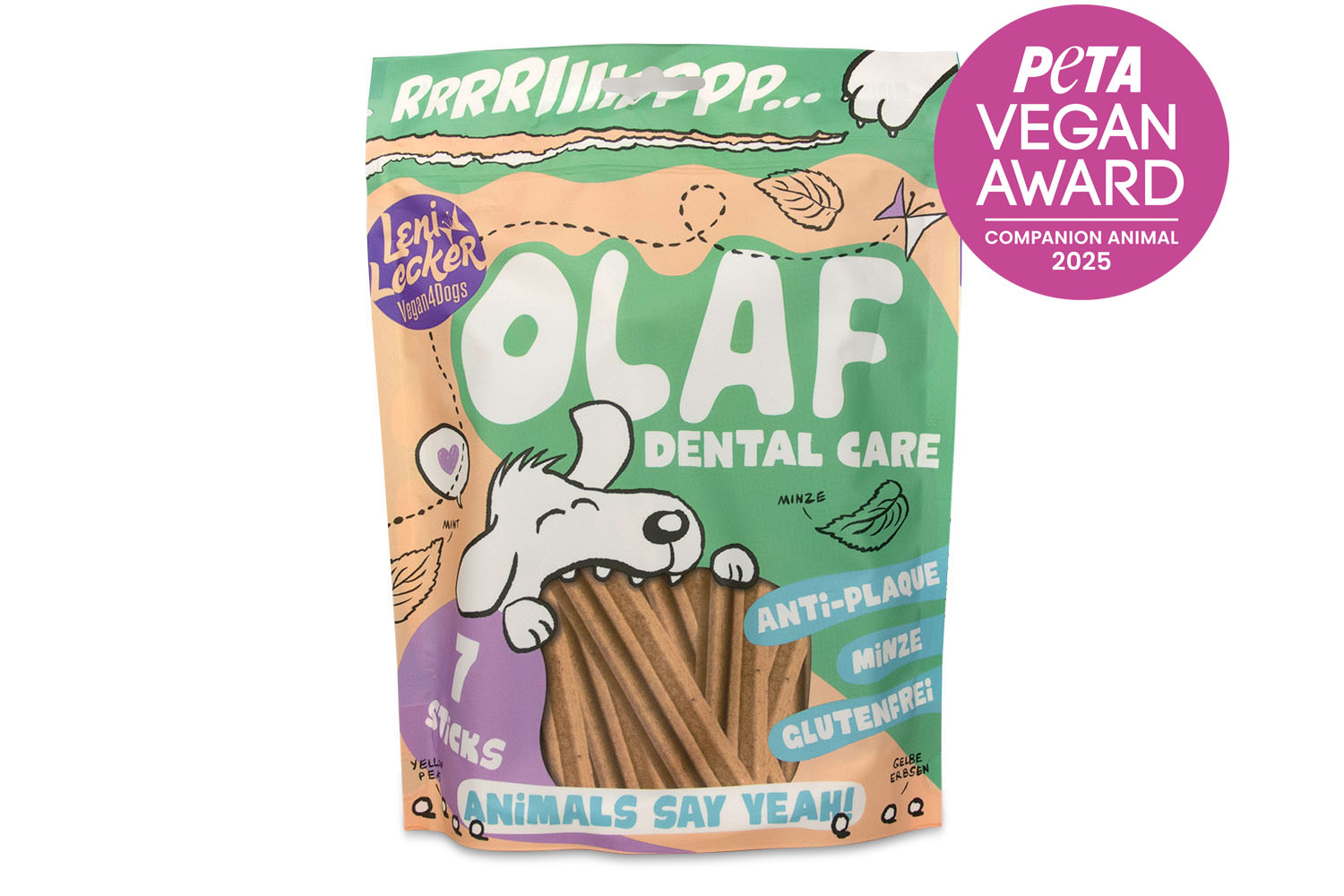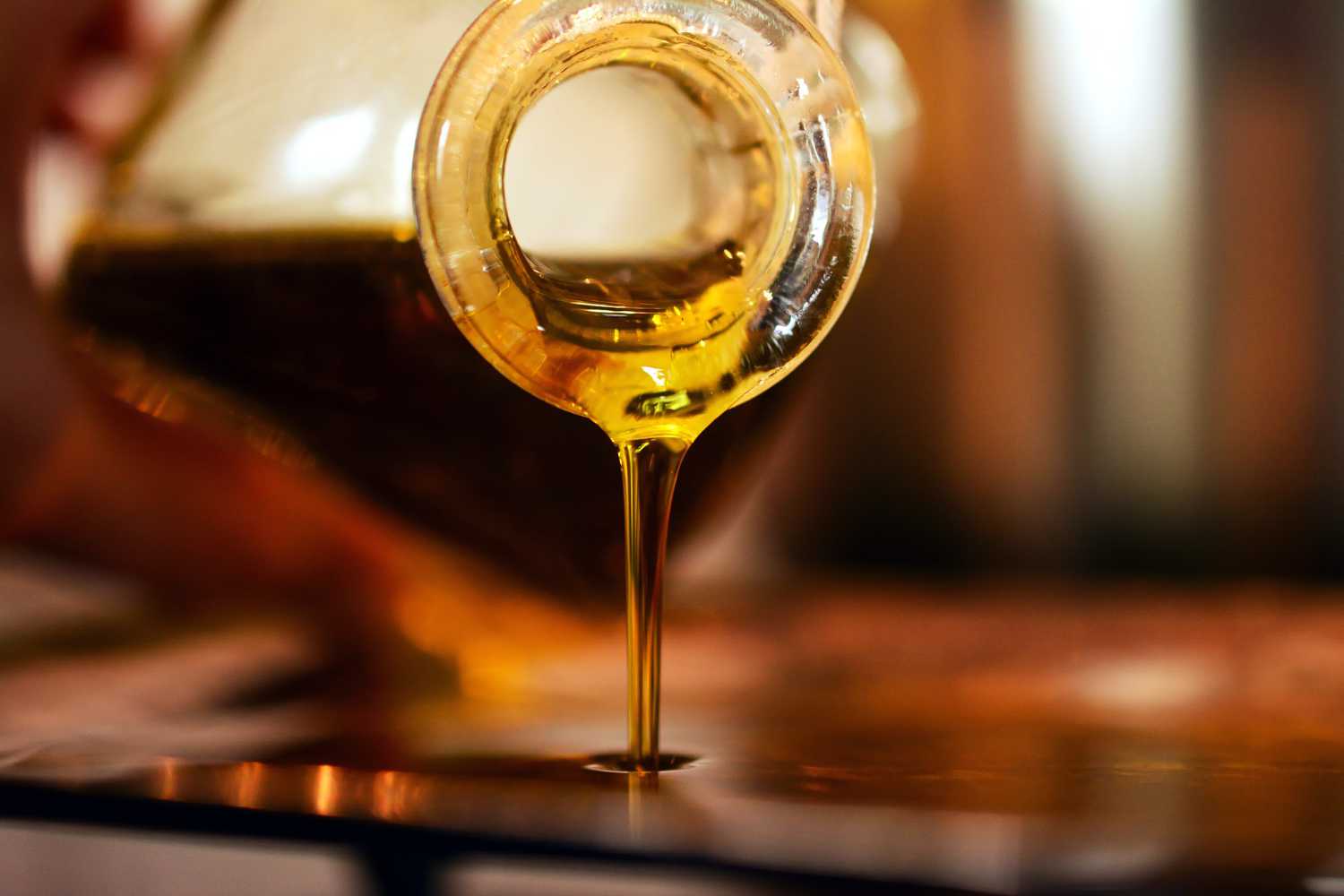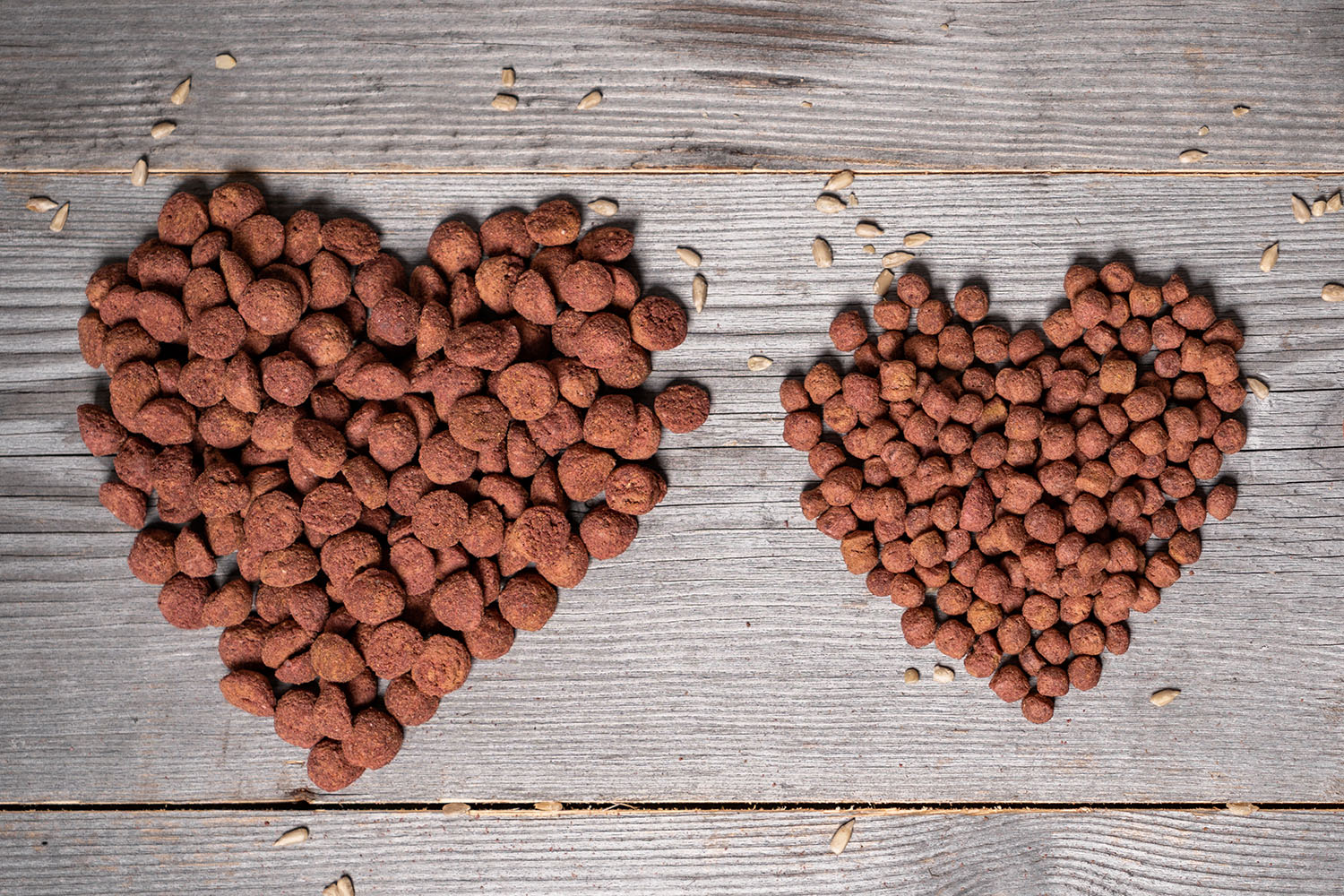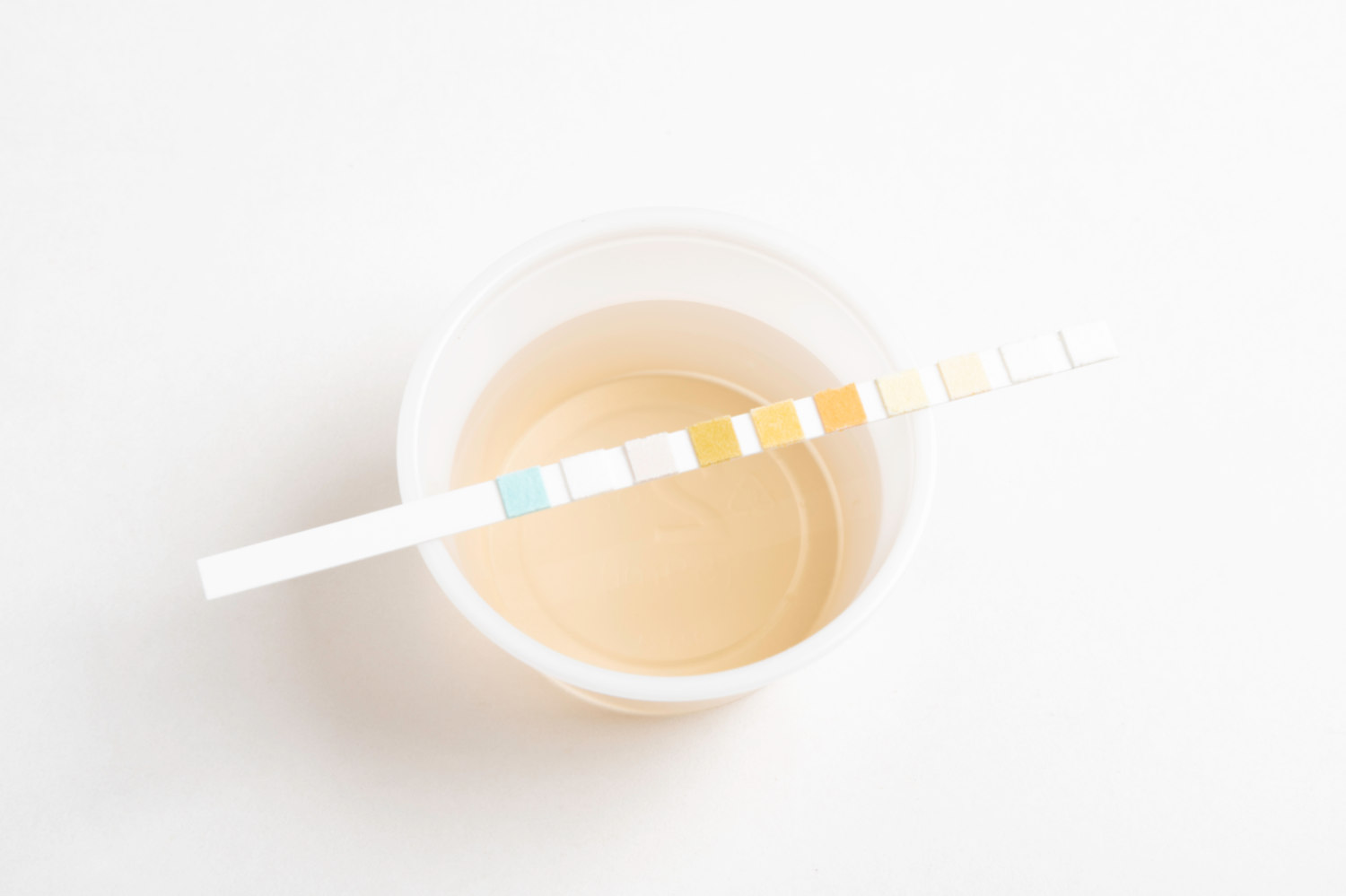
Urine pH Levels in Dogs - An overview
We regularly receive questions about the pH value of your dog's urine and the associated challenges: From the topics of struvite stones and calcium oxalate stones to specific requests on how to adjust your dog's diet if the urine pH is too low or too high. We give answers to these questions and share what we as a dog food manufacturer are doing to reduce the risk of diseases associated with alkaline urine and how we achieve this in respect of our kibble Greta.
To give this topic the attention it deserves, we at Vegan4Dogs have created this article in collaboration with vet Susanne Konschewski to explore the matter and answer some of your questions from a veterinary perspective.
Table of Contents
What is the pH value?
What does the pH value of urine indicate and by which factors is it influenced?
In what range should the pH value of a dog's urine be?
How can I measure the pH value of my dog's urine?
What can I do if the pH value is too high / the urine is too alkaline?
Acidifying the Urine through Diet
Over-acidification of Urine (pH level too low)
Vegan Dog Nutrition and the Effect on the pH Value
Summary
Sources
What is the pH value?
The pH value (abbr. for potentia hydrogenii) is a measure of the acidic or basic character of an aqueous solution and indicates how many hydrogen molecules are contained in an aqueous solution. Water with a pH value of 7 is neutral. Fluids that contain more hydrogen ions have a pH value below 7 and are described as acidic. Liquids that contain fewer hydrogen particles have a pH value above 7 and are described as alkaline. Depending on where the pH value is measured, there are different standard values. For example, the pH value can be measured in blood, saliva or, as in our case, in urine.
What does the pH value of urine indicate and by which factors is it influenced?
In simple terms, the pH value measures whether the body is in balance or imbalance. In animals and humans, the pH value depends, among other things, on the respective diet and the time of day at which it is measured. As the pH value of morning urine tends to be in the acidic range, it is not suitable for a meaningful urine check, which is why a follow-up check throughout the day is recommended. By regularly measuring the pH value, you can determine, for example, whether something needs to be added to your dog's food. The pH value can also be affected by your dog's psyche, as the pH value becomes more acidic under stress. Infections and a common urinary tract infection with urease-producing bacteria also cause the pH value to rise. It should be noted that the urine also changes if it is left to stand after collection, causing the pH value to rise. The urine should therefore be analysed as fresh as possible.
How can I measure the pH value of my dog's urine?
Urine test strips that can determine the pH value are available from pharmacies and vets. Alternatively, litmus paper can also be used. Litmus is a blue-violet dye obtained from lichen that changes colour depending on whether it is exposed to acidic or alkaline substances. It turns red in the acidic range and blue in the alkaline range.
As the pH value in the urine changes throughout the day, it makes sense to test several times a day in order to obtain a meaningful value. As every dog is different, the only thing that helps with the actual measurement is practice. You can either hold the test strip directly underneath your dog or collect the urine using a soup ladle, frisbee disc, plate etc.. There are also collection aids available for this purpose, which are designed similar to a small scoop. Once we have found the most practical solution for us and have been able to collect urine without stress for us and our four-legged friend, it's time for testing. It's best to test throughout the day, before feeding, after feeding and write it down. As mentioned above, the urine should be tested as fresh as possible. If you have your dog's urine tested at a vet's practice, it is best to clarify with the vet when the best time to hand in the urine is, as laboratory samples are usually collected in the evening. However, many vet practices, like mine, also have their own laboratory where urine samples can be analysed directly. To avoid the urine having to sit in the practice for a long time, it is also advisable to arrange the time of handing in the urine.
What can I do if the pH value is too high / the urine is too alkaline?
It makes a difference whether the urine is simply alkaline or whether crystals are also found during the urine check and symptoms occur, such as frequent passing of urine, pain or passing of bloody urine. In the case of symptoms, a visit to the vet is recommended. Small crystals can form in alkaline urine, so-called struvite crystals, made of magnesium ammonium phosphate, which can also accumulate to form real stones. These are cream to grey in appearance, smooth or sometimes with an irregular surface and can really annoy the bladder and therefore our pooch. The only advantage of these struvite crystals is that they can dissolve in a low, an acidic pH value. In the blog article 'Rupert and his struvite stones' you can find an experience report on the subject of struvite crystals.
Methionine
Methionine is one of the exogenous (also known as essential) amino acids that cannot be synthesised in the animal organism and must be supplied from outside. It is essential for the formation of protein and thus for the maintenance of life2. Methionine is found naturally in soya beans, peas, green leafy vegetables (spinach) and broccoli2. Due to its sulphur richness, it promotes the detoxification function of the liver and at the same time lowers the pH value in the urine, which prevents the formation of struvite stones. We have added methionine to our kibble Greta, canned food Pauline and our nutritional supplement V-Complete for homemade vegan dog food.
Cranberries
The effect of cranberries can be attributed to their high vitamin C content3. Vitamin C is known to be anti-inflammatory and to ward off infections, but it also acidifies the urine and thus counteracts the formation of urine struvite crystals. Fresh cranberries are not the most popular dog treat. They taste better when dried, though make sure you don't feed sweetened dried fruit. Depending on the size of the dog, it is possible to feed up to a handful of cranberries. It is recommended to soak the dried berries before feeding to increase digestibility. Cranberries also increase appetite and can provide relief from diarrhoea. Alternatively, capsules, powder or tablets can also be used.
Rosehip powder
Rosehip powder is another good source of vitamin C and therefore another way of acidifying the urine via supplementary feeding. The vitamin can be absorbed particularly well due to its bioactive form. With 1,250 mg per 100 g, rosehip is one of the top 3 natural sources of vitamin C Source4. Animals are generally happy to accept rosehip powder as an addition to their food. The dosage depends on the body weight. Medium (10-25kg) to large (from 25kg) dogs may be given 1-2 grams of rosehip powder per day, small dogs (under 10kg) are given 0.5 grams of rosehip powder.
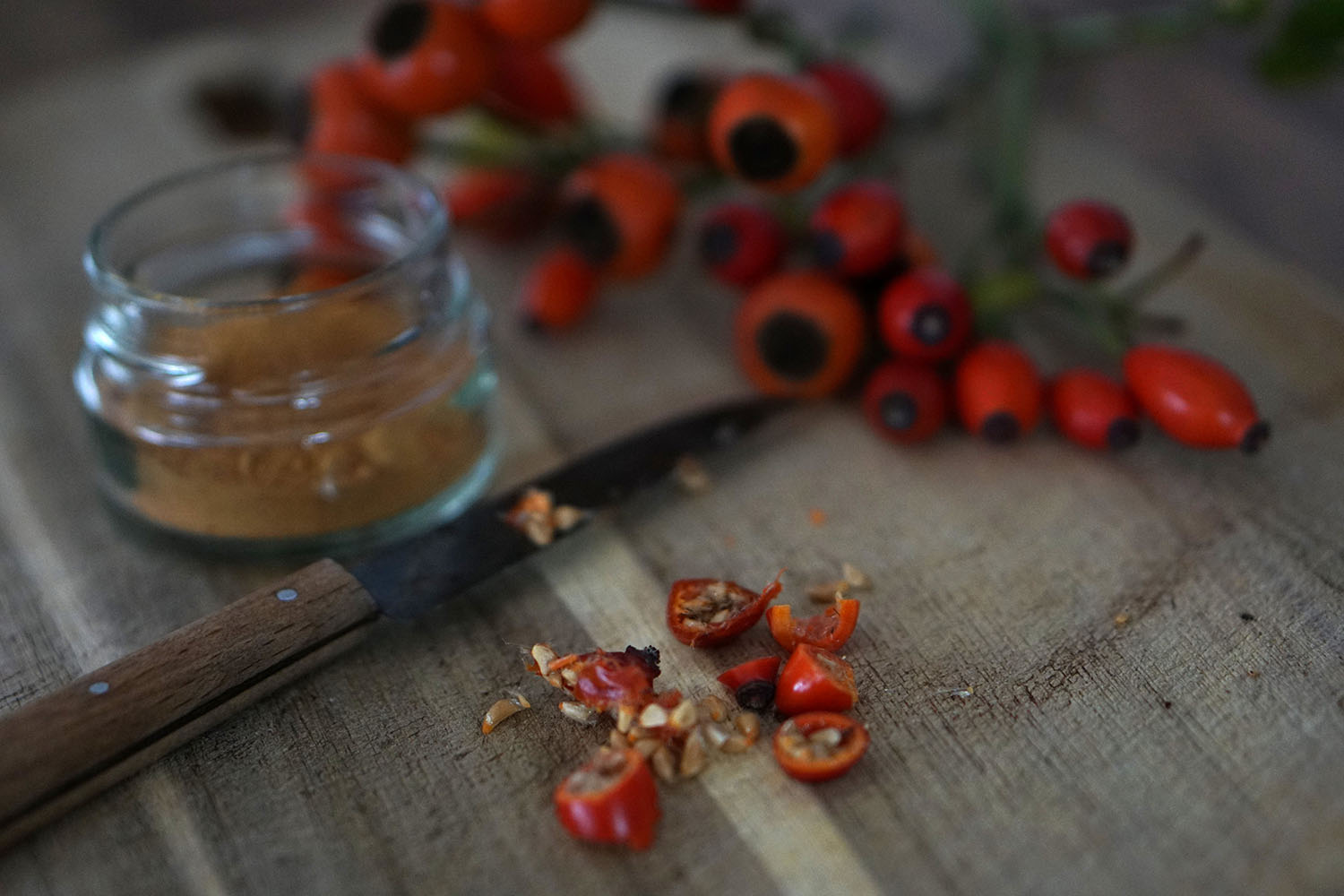
Ascorbic Acid
Ascorbic acid is another way of acidifying the urine directly via vitamin C. In MemoVet the suggested dosage is 100 to 500 mg per dog up to three times a day Source5. I would recommend a dosage depending on the number of struvite crystals: i.e. a higher dosage if a lot of crystals are present. However, as some dogs react sensitively with their stomach, only as much as necessary and as little as possible.
Flushing out crystals by increasing fluid intake
If crystals have been detected in the urine, increased fluid intake will help to flush out the crystals. For this purpose, you can, for example, soak the dry food in water and offer it for feeding. Another option is to make the water more palatable, by adding a mini sip of plant milk, for example. Putting the kibble in the water bowl can help, as your companion will try to snatch the chunks out of the water. There is a little water with every crumb and our dog may have a lot of fun too.
Over-acidification of Urine (pH level too low)
n addition to urine that is too alkaline, there is also the possibility that your dog's urine is too acidic. If the urine is too acidic, there is a risk that calcium oxalate dihydrate crystals can develop which, unlike struvite crystals, cannot be dissolved by changing the pH value. To differentiate between the various urinary crystals, it is essential to analyse the urinary sediment. If calcium oxalate crystals are detected in the urine, further acidification is avoided. Enforced water intake helps to flush out the crystals.
Vegan Dog Nutrition and the Effect on the pH Value
Basically, it can be said that the environment in a carnivore's body is more acidic, whereas it is more alkaline in herbivores. The same applies to the urine that is excreted. With vegan diets, the pH value may slip too far into the alkaline range, i.e. above 7.2. We at Vegan4Dogs have taken precautions here and added methionine (0.53%) and cranberries to our vegan dog food Greta to prevent the pH value of the urine from becoming too high, in other words too alkaline. In some cases, predispositions to bladder stones are possible, so it makes sense to check the pH value of the urine and take appropriate measures if necessary.
Disclaimer
This article is for information purposes only and does not replace a veterinary consultation. In the case of health issues or problems, we recommend that you seek advice from a vet who can better assess your individual situation and consider the appropriate treatment.
Sources
1. Vetenaryworl, S. N. Yadav, N. Ahmed , A. J. Nath , D. Mahanta, M. K. Kalita: Urinalysis in dog and cat: A review, 2020 (As of 02.05.2024)
https://www.veterinaryworld.org/Vol.13/October-2020/13.pdf
2. Aminosäure L-Methionin, Aminosäure.org (As of 02.05.2024)
https://aminosäure.org/aminosaeuren/l-methionin/
3. Zhao, Shaomin & Liu, Haiyan & Gu, Liwei. American Cranberries and Health Benefits – an Evolving Story of 25 years. Journal of the science of food and agriculture. Published 2018. doi:100. 10.1002/jsfa.8882. (As of 02.05.2024)
https://pubmed.ncbi.nlm.nih.gov/29315597/
4. GEO, Hagebutten: Diese Vitamine stecken drin (As of 02.05.2024)
5. Dosierungsvorschläge für Arzneimittel bei Hund und Katze: MemoVet (DOSVET), Taschenbuch, Wilfried Kraft, Ilka U. Emmeric, René Dörfelt, Nicole Abbrederis



